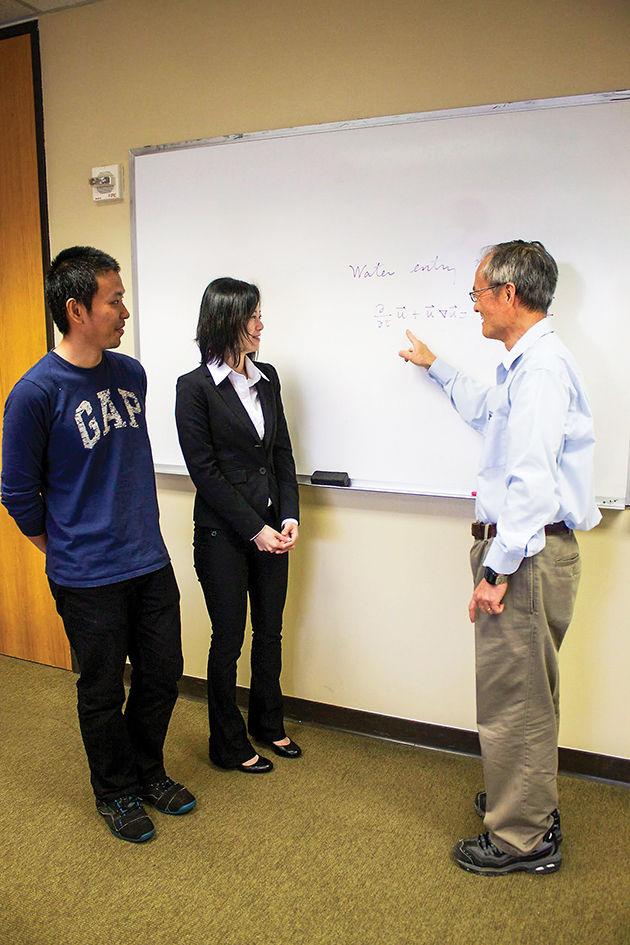Two Texas A&M graduate students presented their work examining what happened to Malaysian Airlines Flight 370 at a supercomputing conference in Austin last week.
Malaysian Airlines Flight 370 was an international passenger flight that disappeared in March, with over 227 crewmembers and passengers. Goong Chen, mathematics professor, said he began working on the project that was presented last week shortly after the disappearance of the flight.
The team working on the project, including Chen, recent doctoral graduate Y-Ching Wang and mathematics graduate student Cong Gu, determined the lack of floating debris likely meant the aircraft entered the water at a near vertical angle.
“We heard a bunch of news broadcasts about this, and I was just as curious as everyone else,” Chen said. “Why was there no floating debris? And then one day it occurred to me that I could use mathematics to study and to compute, to simulate such situations and form the simulations using the supercomputers on campus here as well as at Qatar campus.”
Chen said due to the many variables involved it was necessary to use supercomputers to solve the complex equations.
“The mathematical model for the so-called water entry problem was settled using partial differential equations,” Chen said. “These are systems of partial differential equations involving turbulence, therefore computationally it is a very big challenge, and there is no way for mathematicians to do hand calculations to solve those equations.”
Wolfgang Bangerth, mathematics professor, said in essence, a supercomputer is a group of computers networked together.
“The way we approach this is we say if we can’t do it on one machine, maybe we can just take 1,000 machines, each of which deals with say one million of these little volumes,” Bangerth said. “And because the volume over here is going to interact with the volume over here, these two computers will have to communicate. So you end up with 1,000 computers that are connected through a network and together they form what we call a supercomputer.”
Bangerth said the challenge of supercomputing comes in designing the software to demonstrate the mathematical model.
“When I say that one processor deals with the volumes over here and the other processor deals with the volumes over here, somehow they have to communicate in such a way that they agree what this one computes has an influence on this one and all of this influence is correctly accounted for,” Bangerth said.
Chen said he hopes the team will expand its research to look at other problems.
“As a mathematician it’s not just doing one thing, you can study a host of other problems,” Chen said. “For example, they can also simulate a mobile crash, that’s more common than an aircraft crash. Once you know the basic methodology you have a whole horizon opening up to you.”
Wang said Gu and herself have already begun to examine and run simulations on aircraft crashes on land and are hoping to publish a follow-up paper.
Chen said along with explaining what happened to Flight 370, he hopes the project will result in safety advances.
“This kind of simulation can help future aircraft safety design, by ensuring more passenger survival, ensuring more airline crash worthiness,” Chen said. “Airplane crashes are always tragedies, but from a safety point of view, such consideration can help us understand the damage and crash mechanism much better and that is one of the main goals of our research.”
Team calculates trajectory of missing Flight 370
November 23, 2015
0
Donate to The Battalion
$1815
$5000
Contributed
Our Goal
Your donation will support the student journalists of Texas A&M University - College Station. Your contribution will allow us to purchase equipment and cover our annual website hosting costs, in addition to paying freelance staffers for their work, travel costs for coverage and more!
More to Discover










